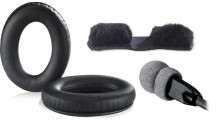Proseal Pr-1776M Class B Low Weight Fuel Tank Sealant
MFR Model# PR 1776M B2
- JUMP TO
- Overview
- Reviews
- Q&A
- View in Catalog
Overview
|
PR-1776M Class B is a low density, high temperature aircraft integral fuel tank sealant. It has a service temperature range from -65°F (-54°C) to 250°F (121°C), with very limited excursions up to 360°F (182°C). This material is designed for fillet sealing of fuel tanks and other aircraft fuselage sealing applications. It offers as much as a twenty percent weight savings, per unit volume, over traditional sealants used for these purposes. The cured sealant maintains excellent elastomeric properties after prolonged exposure to aircraft fuels both jet fuel and aviation gas, and will resist limited contact to diphosphate ester based hydraulic fluids. Features: |
Q&A
Please note, Aircraft Spruce Australia's personnel are not certified aircraft mechanics and can only provide general support and ideas, which should not be relied upon or implemented in lieu of consulting an A&P or other qualified technician. Aircraft Spruce Australia assumes no responsibility or liability for any issue or problem which may arise from any repair, modification or other work done from this knowledge base. Any product eligibility information provided here is based on general application guides and we recommend always referring to your specific aircraft parts manual, the parts manufacturer or consulting with a qualified mechanic.

 Aircraft Spruce Australia
Aircraft Spruce Australia






























